When it comes to something like the Whitney Biennial, or for that matter the siren of any large display of contemporary art, whether a museum survey, an art fair or even a small-budget benefit, I look forward to seeing stuff by artists I haven't heard of before but I'm also excited to see emerging artists I've managed to scope out already. If I liked the work there's nothing more exciting than seeing the artist get greater recognition and a broader audience.
While the latest Whitney Biennial makes me happy on both accounts, there's one area in which it may disappoint even some of its most loyal fans: There is some surprisingly-not-so-exciting new work by familiar and honorable names included in the 2008 survey presumably because of their continued importance to younger colleagues and to the contemporary scene generally.
I'm thinking of the work of John Baldessari and Sherrie Levine, or at least her sculptures, and I was disappointed by the work with which Mary Heilmann and James Welling were represented. I'll add quickly add that Matt Mullican's work looked great, even if I can't explain it.
What will follow all these paragraphs is a list of some of my enthusiasms for work by the show's less-established artists. I'll admit there were some rough spots on Madison and Park Avenue last Wednesday afternoon (I just don't get Kembra Pfahler or Seth Price, for instance), but it was great fun making the rounds.
Someone should write about the impact on curated events like the Biennial of "art shows" like Armory, Basel and the dozens of newer ventures which drag gallerists, artists, curators and collectors to more and more venues all over the planet. Maybe the evaluation will become easier if they begin to lose viability, as many are predicting. In any event, perhaps it's the hoped-for effect of the "cure" in the curator which brings us back to the Whitney's signature venture every two years.
I've only been to the press preview so far, and that visit was limited to but a few hours (not enough time, even for an exhibition with fewer artists than usual, especially since there is so much performance art included this year). This checklist is therefore somewhat provisional. I look forward to another visit - and a revisit to work which didn't register with me the first time around. Also, to be fair, these choices represent a limited number of somewhat accidental marriages between picks and my ability to get decent images with my camera.
One more thought: Many of the pieces which have been selected, or in fact commissioned, by the curators are pretty overtly political, something which even a few years ago visitors and critics would have found, literally, "remarkable". The world has indeed changed, certainly for the worse, but the fact that more and more people understand that may be attributed not least to the many artists who actively pursued truth all along.
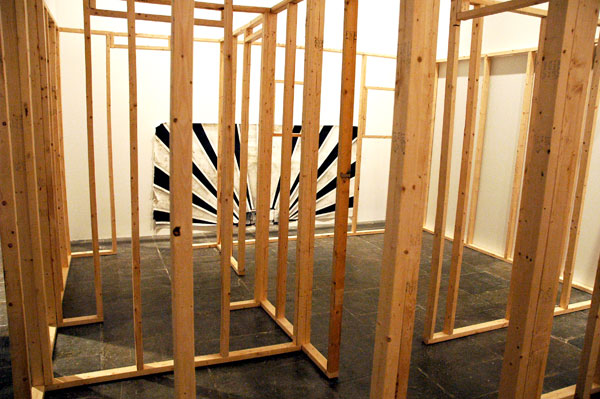
William Cordova's open, labyrinthian construction of wooden studs, "The House That Frank Lloyd Wright Built for Fred Hampton and Mark Clark", is an historical and political document; the work seen on the far wall is "Ollantaytambo (for F. CLearwater, L. Lamont & Bunchy Carter)"
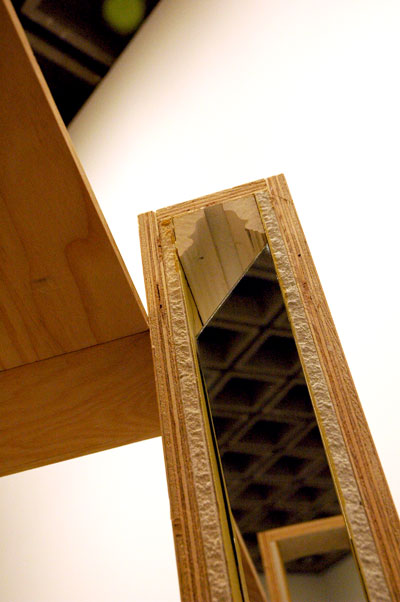
Heather Rowe's "Something crossed the mind (embellished three times)" defends its Whitney-commissioned territory while literally reflecting its museum environment
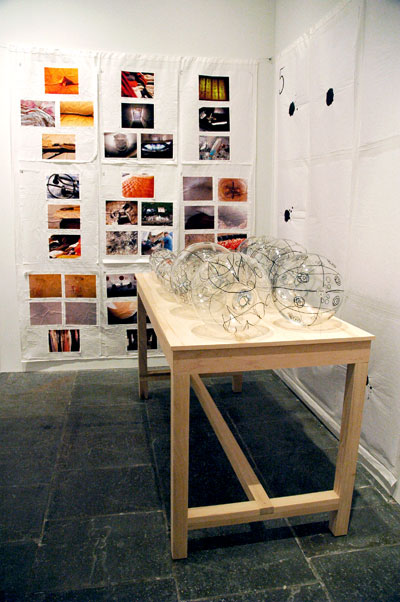
Matt Mullican shows some "ellipses and balls", and some other stuff; that's all I know right now
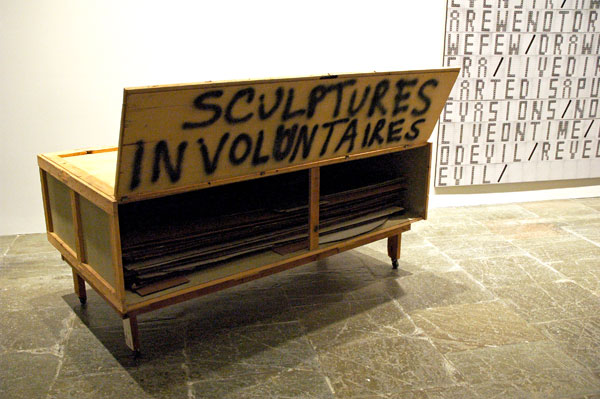
Shannon Ebner's, characteristically assembled from language, here includes "Involuntary Sculpture" from 2006 in the foreground, and this year's "STRIKE", a detail of which is seen to the right
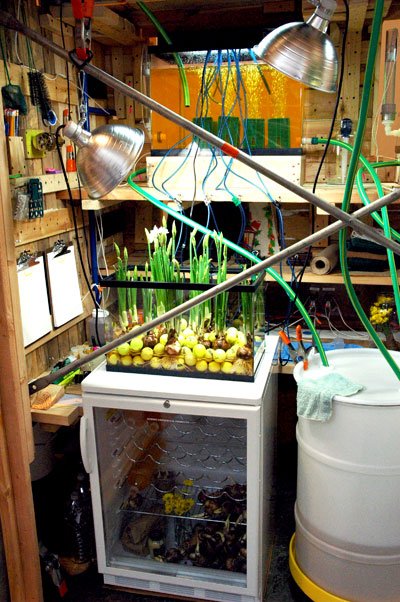
Phoebe Washburn employs golf balls, Gatorade, a wine refrigerator, and whatnot in order to sustain a ecosystem for flowers, "While Enhancing a Diminishing Deep Down Thirst, the Juice Broke Loose (the Birth of a Soda Shop)"
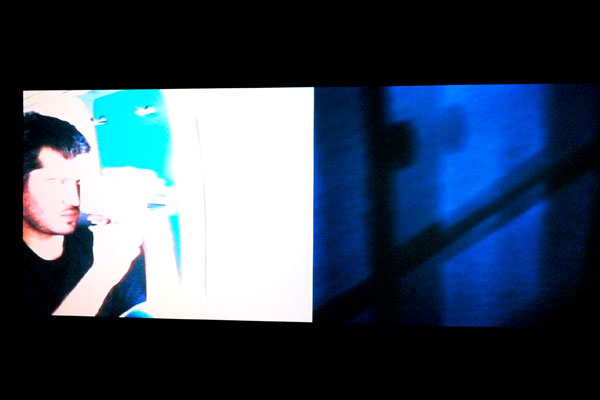
Amy Granat and Drew Heitzler, inspired by Goethe's Werther, document a road trip in projection stills from "T.S.O.Y.W."
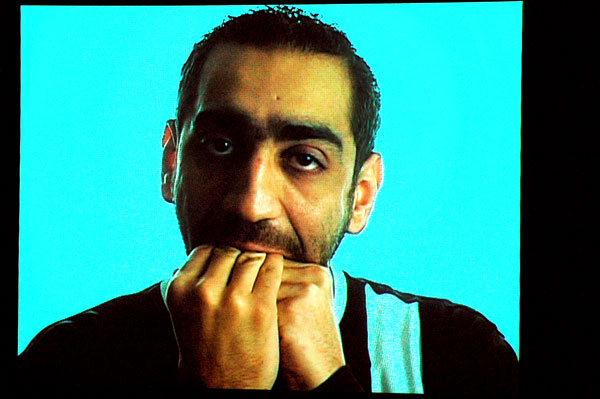
Julia Meltzer, David Thorne and Rami Farah collaborated on "not a matter of if but when: brief records of a time when expectations were repeatedly raised and lowered and people grew exhausted from never knowing if the moment was at hand or was still to come"
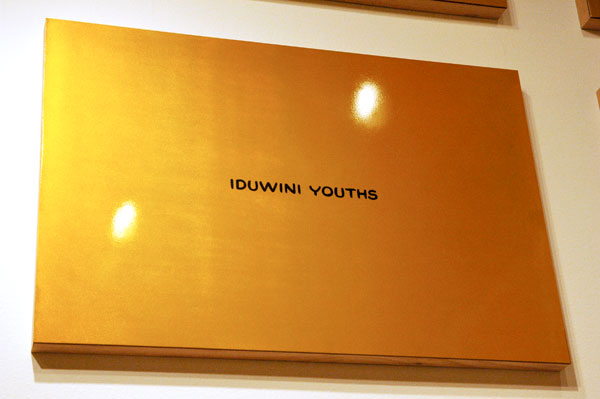
Daniel Joseph Martinez's installation suggests a golden ossuary, but the bones which sustain the many worldwide terrorist organizations that are the painted subjects of "Divine Violence" are not at rest
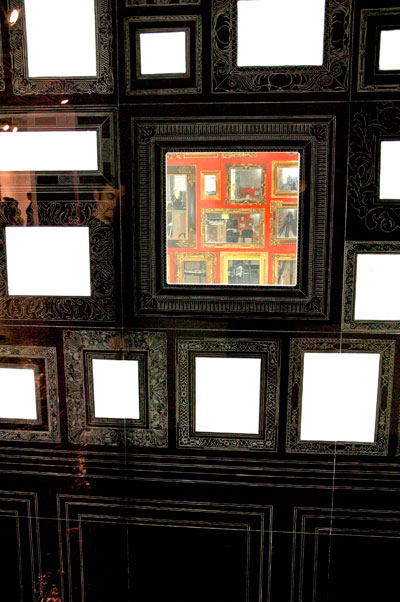
Ellen Harvey has installed an entire environment, "Museum of Failure: Collection of Impossible Subjects & Invisible Self-Portrait in my Studio", in a room of her own at the Whitney
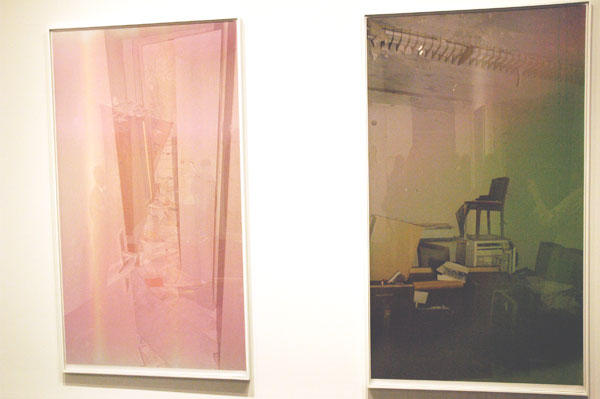
Walead Beshty's gorgeous series of photographs, "Tschaikowskistrasse 17 in multiple exposures (LAXFRATHF/TXLCPHSEALAX) March 27-April 3, 2006", documents an abandoned embassy to a state which no longer exists representing a government which no longer exists
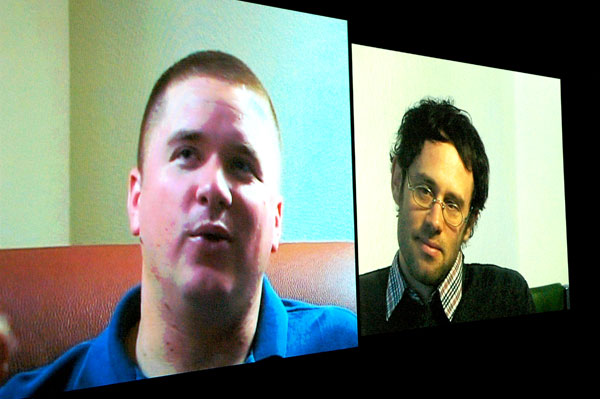
Omer Fast's "The Casting" conflates the perversity and ordinariness of domestic and military violence in a four-channel video which employs actors and a script
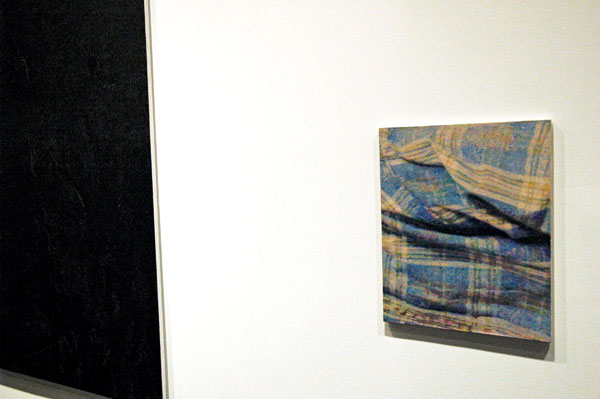
Cheyney Thompson's paintings, like all of his work, are like nothing else around; there were three large dark (virtually unphotographable) canvases surrounding this single smaller and lighter painting.
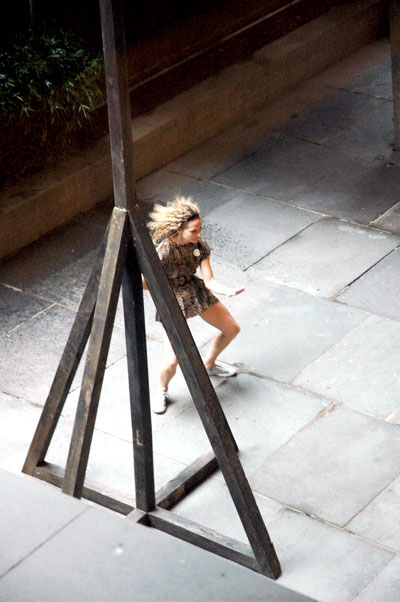
Flora Wiegman, who performed solo throughout the Whitney on Wednesday, dancing [see Barry's video] the role of various creatures protected by Fritz Haeg's sculptural initiative, is seen here below the bat house at the bottom of the Museum's broad moat
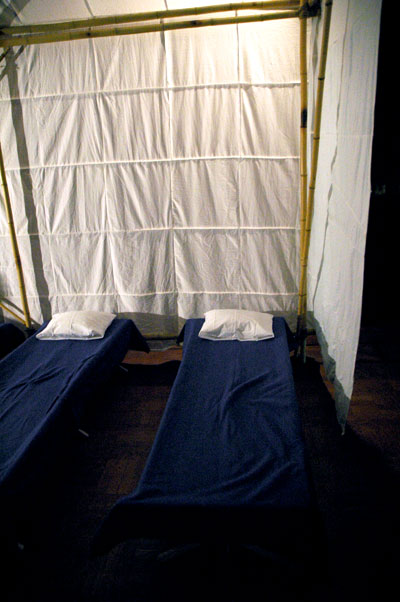
DJ Olive installed a campsite and sound project inside the Seventh Avenue Armory, on the second floor and the mezzanine above
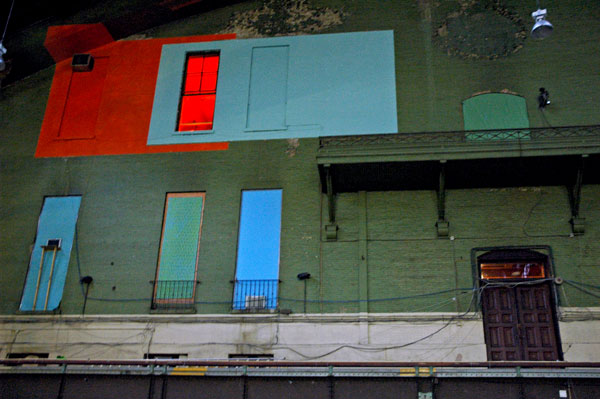
Lisa Sigal re-imagined parts of the east wall of the Administration Building inside the Drill Hall
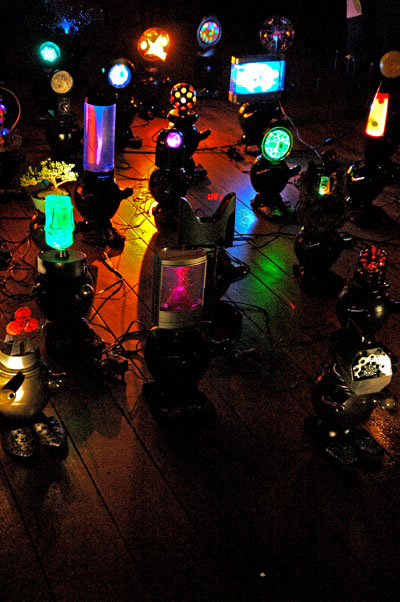
Olaf Breuning assembled a colorful, animated and whimsical platoon of teapot-based electric robots, "The Army", and installed it on the second floor of the Armory
I didn't take notes, so I'm sure I've forgotten a number of people, but some of the artists responsible for installations I did not record digitally but which I really liked include, : Bozidar Brazda, Harry Dodge and Stanya Kahn, Garder Eide Einarsson, Roe Etheridge, Rashawn Griffin, Alice Könitz, Louise Lawler, Jason Rhoades and Bert Rodriguez.
Really liked Fritz Haeg's installation. I didn't Realize Flora was interpreting from it... she was fun to watch.